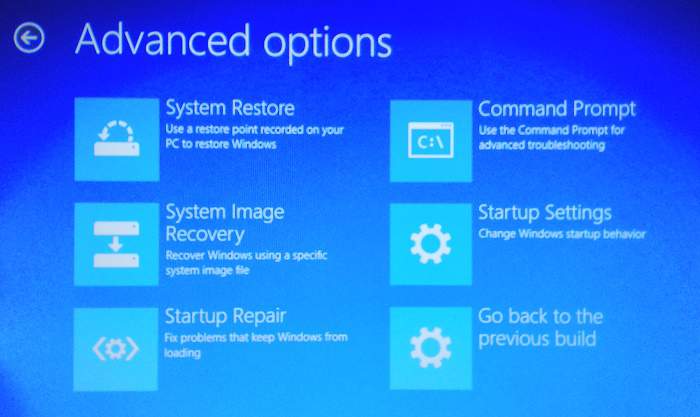Windows has completely revamped its boot options by consolidating them into a single menu. Boot options menu will provide access to repair tools and option which will help to fix the problems in Windows. Also various options like booting into safe mode, enabling debugging mode, enabling boot logging, disabling automatic restart on system failures etc.
The days have changed, you no longer need to press the ESC key or wonder which function key to press to get into BIOS. There are many ways to access the new options menu in Windows 8 or 10 PC. You can access Advanced Startup Options manually either by pressing the SHIFT key while pressing the restart option or by using the options in PC settings to enter into advanced startup options.
How to Use the Advanced Startup Options
Let’s see various tools and its uses which are under the Advanced Startup Options.
Continue
Continue option will be helpful when you want to exit the Advanced Startup boot options and boot into Windows 8 or 10. Using the Continue button is one of the quickest ways to exit the Advanced Startup menu and boot into your PC.
Turn off your PC
The function of Turn off your PC button is to exit the Advanced Startup menu and shut down your desktop or laptop.
Troubleshoot
As the name itself indicates that the Troubleshoot option contains various tools like Refresh, Reset your PC and other advanced tools. Let’s see them one by one.
- Refresh your PC: If your PC is not working well as it once did, and you don’t know why. Then, refresh your PC without deleting any of your personal files or changing your settings using the Refresh your PC button.

- Reset your PC: If you want to recycle your PC by giving away all the data and start over from the first then Reset your PC comes handy. All the installed applications, personal files and settings on your computer will be deleted.

- Advanced options: Advanced options screen has the advanced troubleshooting and repair options. Here is a list of various tools available in Advanced options.
- System Restore: If any of the recently installed application or drivers is causing any trouble in your PC then, you can revert your PC to a point of time it was working fine called restore points. Restore points can be created either manually or you can set them to create automatically at a certain time. None of your personal files gets affected when your system is restored.
- System Image Recovery: You can also use System Image Recovery tool instead of system restore to revert your PC to a point of time it was working well. But to restore your PC using this tool, a recovery image has to be created in prior using the backup tools.
- Automatic Repair: Automatic repair option is the first option you must try if your PC isn’t working properly or booting properly. Automatic Repair will start automatically and scan various settings, configuration options, and system files for corrupted files and settings. If it finds any, then it will fix them automatically.
- Command Prompt: Command Prompt option will be useful for users who have some idea over the commands to troubleshoot and fix the issues on the computer. You can use commands o troubleshoot and perform various operations on your computer.
- Startup Settings: If you are IT admin or a pro, then you can use this options to start your Windows with advanced troubleshooting modes like safe mode, debugging, boot logging and much more.

Of all the options discussed above in the advanced startup options, Automatic Repair and System Restore options would come handy when you need to fix problems in your computer. That’s it.
If you find this tutorial useful, do share it with your friends. Let us know your suggestions in the below comments section.
